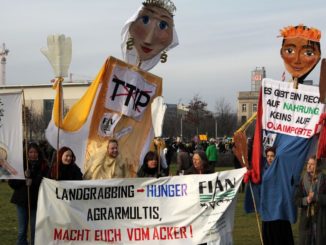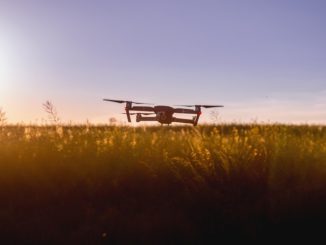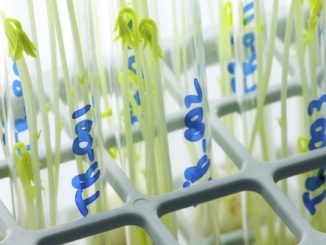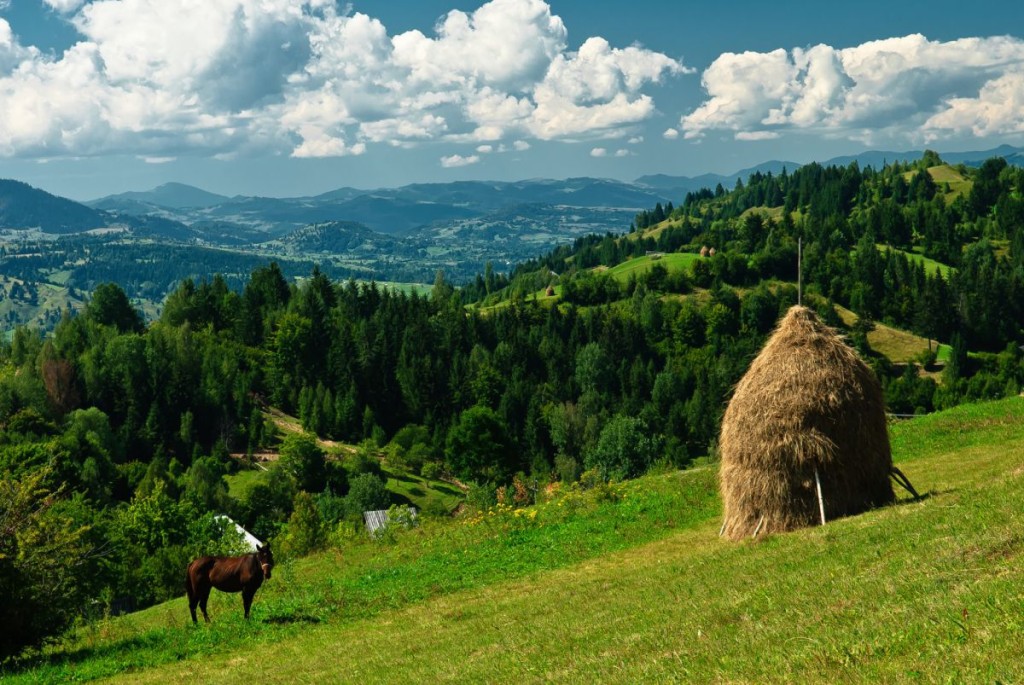
Derek Freitas (Food Sovereignty Campaign Coordinator for Eco Ruralis)
Agritourism is picking up steam in Romania. From humble beginnings, this economic activity is steadily growing and helping the rural population keep their agricultural traditions and culture alive.
It is important to take a moment to differentiate between ecotourism and agritourism. Ecotourism usually focuses on visiting pristine and relatively undisturbed natural landscapes. Agritourism principally focuses on connecting the visitor to activities related to agriculture, farms and food. This can include local food festivals, seed swaps, picking your own food, visiting farmer’s markets, etc. Both activities bring money to local economies but only one focuses directly on food and agriculture.
In the early 90’s, a French program called L’Opération Villages Roumains (OVR) began aiding the Romanian countryside due to the fall of communism. OVR empowered some French citizens to go to Romania and provide workshops and conduct skill sharing events related to rural development. Local officials as well as villagers participated in these events and money was also donated to aid projects in this sector of the economy.
Nowadays, agritourism is becoming more and more diverse in Romania. A website called EcoSapiens currently lists hundreds of such opportunities. Some events listed include: a cycling tour of farms, hiking up mountains and eating at nearby farms, touring the Danube Delta and visiting local farmers and fisherfolk in their villages, attending local food workshops, going to vineyards and wineries in different regions of the country and many many others. EcoSapiens currently has 9,000 members and the forums provide information and answers to questions about virtually any interest that one may have in regards to agritourism.
opportunities. Some events listed include: a cycling tour of farms, hiking up mountains and eating at nearby farms, touring the Danube Delta and visiting local farmers and fisherfolk in their villages, attending local food workshops, going to vineyards and wineries in different regions of the country and many many others. EcoSapiens currently has 9,000 members and the forums provide information and answers to questions about virtually any interest that one may have in regards to agritourism.
One good example of agritourism is the Transylvanian Brunch. Transylvanian Brunch began in 2008 as an initiative of the local action group association Microregion Hartibaciu in order to promote the Hartibaciu Valley and local products. Brunches are organized on the last Saturday of every month in a special location and feature a culinary theme, for example, an old fashioned train ride, hikes along a cultural trail, local music, etc. Many local bars, cafes, museums, transportation companies, tour guides and hotels and guesthouses all benefit from these monthly events. Some members of the Eco Ruralis staff participated in one of these brunches in Cincsor a couple months ago. They had an amazing time and learned a bit more about some of the local culture and loved the food!
Other creative examples are noted on another website called My Transylvania. An event called “Electric Camping / Full Moon Picnic” was recently hosted by a local sustainable food initiative Sustainable Hosman (Hosman Durabil). In their description, they say “Lets have a party! We organise for you a camping in a beautiful location, either at the foots of the Carpathian Mountains or in a rural area. After having a traditional dinner we camp and party all night long. Breakfast is with local products is also being provided.”
was recently hosted by a local sustainable food initiative Sustainable Hosman (Hosman Durabil). In their description, they say “Lets have a party! We organise for you a camping in a beautiful location, either at the foots of the Carpathian Mountains or in a rural area. After having a traditional dinner we camp and party all night long. Breakfast is with local products is also being provided.”
Other events include a dinner feast in nature that allows you to taste new recipes based on local and seasonal products prepared by an experience local cook. They say “Every meal goes with a story from the village and the presentation of a local, social project.”
And yet another event encourages one to “Discover how to make the traditional zacusca, conserve the vegetables over the winter (pickles), how to bake bread, make cheese, prepare mushrooms or combine bacon with onions to a lovely paste. Our hosts show you how to do everything and tell you the stories about the local recipes.”
Other examples of agritourism revolve around knowledge transfer exchanges on farms. World Wide Opportunities on Organic Farms (WWOOF), HelpX and Workaway all list opportunities for volunteers to visit farms and work with farmers to complete projects in exchange for being educated about different farming methods and free food and accommodation.
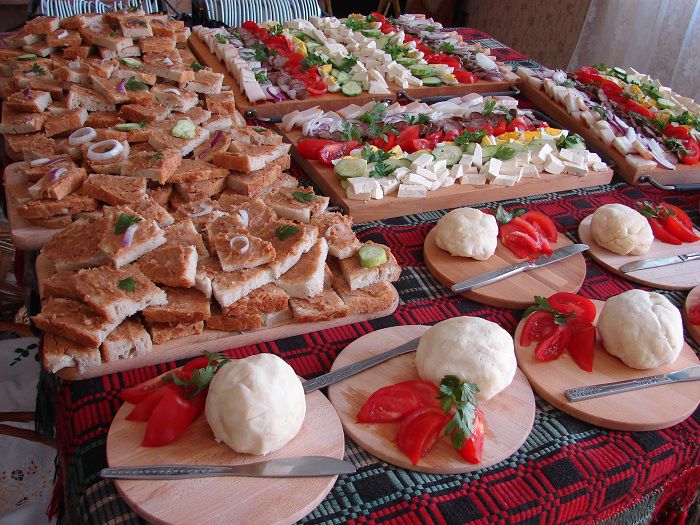 Last year, Eco Ruralis set up a trip of day-long activities related to local food, cooking and farming for a group of individuals from The Hague. In a village called Valco, we planted fruit trees, sampled local food and visited a remodeled communist farm as well as local makers of honey and palinca (a traditional alcohol beverage).
Last year, Eco Ruralis set up a trip of day-long activities related to local food, cooking and farming for a group of individuals from The Hague. In a village called Valco, we planted fruit trees, sampled local food and visited a remodeled communist farm as well as local makers of honey and palinca (a traditional alcohol beverage).
The examples above display the growth of agritourism here but this is happening in other European countries too. At the Oxford Farming Conference 2014, Caroline Millar, a small farmer from the UK points out, “We welcome hundreds of non-farmers every year, who all leave with some understanding of the way food is produced and the role that farmers play in protecting the natural environment.” She also notes that agri-tourism is becoming more profitable for her than food product selling. Mixing the two activities may provide a more economically sustainable farm model presently and in the future.
AGRITOURISM AND THE CAP
In the previous Common Agricultural Policy (CAP) 2007-2013, Romania received Rural Development funds in the amount of 8.203 billion euros. For the CAP 2014-2020, Romania’s National Rural Development Plan (NRDP) has already outlined how the country’s projected total amount of EU funds for Rural Development, 8.015 billion euros, will be used. Since there is only a slight decrease in the amount of total funds allotted, this should not cause a big change in agritourism activities and growth.
As it stands for 2014-2020 Rural Development Programs (RDP), Measure 4 will include lots of funds (6 million euros) for agritourism, especially regarding the knowledge transfer and cultural activities that currently operate like the Transylvanian Brunch. In fact, the Transylvanian Brunch has already received EU funds in the past.
Measure 7 will allocate 200 million euros to grow the organic agriculture sector which is associated with popular alternative food networks and other agritourism activities like WWOOF Romania.
Measure 2 will allow for “The development of exploitations and enterprises for the installment of young farmers, start-up, micro enterprises and small non agricultural companies. This measure will receive a total sum of 1032 billion Euro. The establishment of enterprises for young farmers will receive a 619 million Euro allocation, almost double of the amount received in 2007-2013. Also, 413 million Euro will be allocated for the establishment and development of non agricultural activities in rural areas.” This will definitely help the local economic activities of creating hostels and guesthouses or creating cultural infopoints or guided tours of villages and small towns which can enhance agritourism.
Measure 6 includes 849 million euros for agroecology and environmental and climate awareness, with a total allocation of 849 million Euro. 2.3 billion Euros will be allocated for this and member states have to use 30% of their NRDP for these objectives. It is not clear how this specifically relates to agritourism but some ecotourism activities are closely related and sometimes mix with agritourism.
Measure 9 allocates 3 million euros through the European Innovation Partnership for the start of or strengthening of cooperation between groups in the Romanian countryside. BioCoop Sibiu in Transylvania is a cooperative which supports the growth of organically produced food products for local consumers. They may be able to ask for funds from Measure 9.
As a child, I participated in haunted hayrides and pumpkin picking. As an adult, I have visited orange and apple orchards with family members and picked out our own varieties which created special desserts for celebrations. Agritourism’s rise in popularity and sustained CAP funding will allow more and more people to learn from one another, have fun, protect country landscapes and assist local economies that really need a boost.
More from Ecoruralis:
- Tough Times for Eastern European migrant workers
- Moldova: East or West, Capitalism Defines its Socio-Economic Terrain
- Will Dacian Cioloş remain as Agriculture Commissioner?
- Want to volunteer on peasant farms? Try WWOOF Romania!
- Pioneer’s GM maize 1507: a case history
- Grown men working 12 hours a day for a loaf of bread
- Romanian alternative food networks: growing through the cracks
- Victory for Romanian peasants over gold mining corporation
- Food Sovereignty: an idea whose time has come.
- Public Land Agencies: French SAFER model safe for Romania?
- Elections 2014 in Romania
- New open source database uncovers land grabbers


